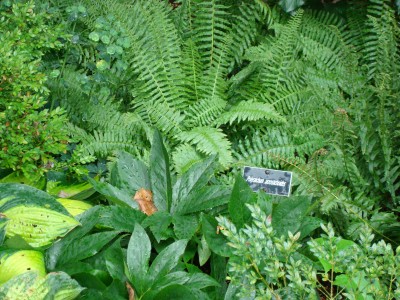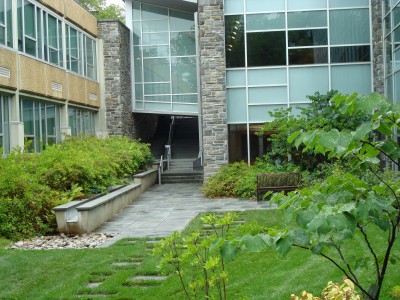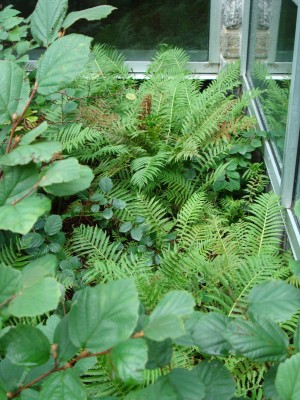A Tapestry of Green
It is a transition time for the seasons…I can feel and smell the autumn in the first part of the morning before the heat and humidity of the day set in. It is also a transition time in the gardens as well – with summer blooms fading and trees beginning to think about fall color. With the rain we have had in the last few days, leaves have plumped up again and the gardens, particularly in the Terry Shane Teaching Garden, feel lush and green. The varying shades and textures of green are set off here and there by touches of orange, yellow, brown and red. Not the showiest of plants, but adding to the mix of greens around campus, are the variety of ferns. An important element in the Shane Garden, Magill Walk, and the Glade Garden, ferns can act as a ground cover, backdrop and textural contrast to other bold foliaged plants. With fewer blooming plants showing off right now, ferns act as a filler and add green interest, setting off the few blooms that are on display in September.
A common but attractive grouping of native ferns is growing in the Glade Garden (this is a well-hidden garden below the Science Center that is worth seeking out after a good rain). Cinnamon fern, Osmunda cinnamomea; Christmas fern, Polystichum acrostichoides; and maidenhair fern, Adiantum pedatum are mixed with other plants native to the east of the Mississippi River in this quiet, green space. These native ferns will be featured in an upcoming Horticulture Seminar with Gregg Tepper and Marcie Weigelt of Mt. Cuba Center. My favorite in the Glade Garden is the cinnamon fern as it is works well in a grouping or as a specimen plant with its gold fall color and cinnamon-colored fertile fronds. The texture created by the fronds is the perfect effect to fill the one corner of this garden.
Our September class on native ferns has prompted the Scott Arboretum to add to its mix of ferns several other native varieties, which will be planted in gardens around campus this fall. In the meantime, be sure to make it over to the gardens after it rains (or even better, when it is raining!) to see the lush, tapestry of green throughout the Scott Arboretum.








No Comments